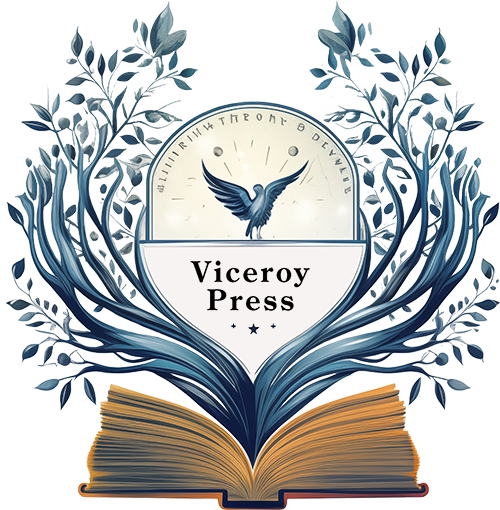
Writer’s Submission process
Resources and links
-
Before you get to writing one of the books in Doom Hunter, take the time to absorb the information on writing style here.
-
Learn the process for submitting your story.
-
Doom Hunter Overview Page Link
All writers, please go here to familiarize yourselves with the main storyline and feel for the series.
-
All writers, please use this resource to familiarize yourselves with the main characters throughout the series. Your individual book description has its own set of characters included within your book’s outline.
-
This area is a useful resource for Templar and doomsday/apocalyptic history. Feel free to copy and paste any of this information for use within your book.
-
Doom Hunter Book Outline Page Link
Go here to find your book’s outline and characters. Happy writing!
-
If you have any questions or need help, please email me directly with your questions, suggestions, comments, etc. My email address is paul@psaudio.com
Story Submissions Instructions
Once you’ve been contracted to write your story for us, there’s a process we go through to make sure it fits in with our expectations before it is sent to the editor.
Step One
Write your best attempt at the opening chapter and complete your detailed story outline.
Opening chapter. In my experience, getting the opening chapter perfected is a real challenge for any writer. Especially a ghost writer trying to emulate another author’s style. Typically, your first attempt will need some work, and I am here to coach you and even help rewrite it for you if necessary. Nothing is more important than knocking this first chapter out of the ballpark.
Story outline. Most of us take the time to detail out the major plot points in our story. In the Book Outlines Section, I have provided the major plot points, twists, turns, and the ending of your book. There are a ton more details going into your story. I trust you’ll outline those before you begin the writing process. That way, you and I can then go through them, cuss and discuss, and ensure we’re all in agreement.
Step Two
Submit it to me.
I will then update this website’s story outline for your book using your detailed outline. This will serve as the editor’s guide once you finish your book.
Step Three
Use the two checklists (below) to review your work.
This is a critical element in finishing.
Start with the Chapter Checklist
Review each and every chapter
Did you hit the key points in that chapter?
Modify it to fit the chapter outline
Use the Final Checklist for the overall manuscript
Step Four
Deliver your story sections according to our agreement.
Once completed, I will review your work and, if approved, finish your payout for the contract.
What happens next?
Once your work is approved, it goes over to our editors.
They will refer to your outline posted on this website.
Unlike traditional editors, our folks are given carte blanche to make revisions as they see needed. This is the easiest way to ensure the books we launch have the same voice and qualities as our readers come to expect.
Working together in the future
Should you and I wish to work together and collaborate on another book in the future, there are two options going forward: staying with Upwork or working directly for me.
Most of you were hired using Upwork. That’s fine, and of course, there are advantages and disadvantages to their service. If you’re more comfortable working through them, that’s perfectly fine.
If, on the other hand, you’d prefer to get paid quickly and without any fees, you can choose to work directly. I pay within a day of approving your work. I pay without fees using PayPal. You will have to have a PayPal account for this to work. If you choose this route, contact me directly paul@psaudio.com.
I will not dishonor my arrangement with Upwork in the middle of a contract, but once completed, feel free to switch if it suits you.
Happy writing!
Chapter Success Checklist for Authors
Go back through every chapter in your story and mark each chapter with the type of chapter you are writing.
Then, make sure it adheres to this checklist.
The proper voice and tone: dark, foreboding, urgent. Please do not inject humor or lightness. Sully’s mission is to save the planet. Serious stuff. Ticking clocks. Bad guys threatening to get her at every turn.
Dark, foreboding, urgent
Chapter opening: Did you list at the beginning of each chapter which of the three types of chapter-opening it is?
Inciting Incident: Have you included an event or development that grabs the reader's attention and sets the plot in motion?
First Plot Point: Does the chapter include a point where the stakes are raised, and the protagonist faces a decisive turn or challenge?
Pinch Point: Have you applied pressure or "pinched" the protagonist, intensifying the conflict and creating tension?
Midpoint of overwhelming problems: Is there a moment marking the story's halfway point, with new revelations, developments, or increased problems leading to a shift in direction or understanding?
Crisis or All Is Lost Moment: Does the chapter contain a moment of utmost despair or peril for the protagonist?
Climax Resolution or Increased Trouble: Have you resolved a significant conflict in the climax while potentially introducing new troubles or challenges?
Progression: Does the chapter deliberately advance the narrative, leaving characters or the story in a different place compared to the beginning?
Urgency? Is there a constant sense of urgency and tension in the chapter?
Propulsion: Does each chapter propel the story or characters forward?
Clutter: Have you avoided chapters consisting solely of descriptions or conversations without meaningful progression?
Cliffhanger Ending: Does the chapter end with a compelling cliffhanger, leaving readers eager to continue?
Final Checklist
Please review your edited work to make sure the main points included in this checklist have all been accounted for. If not, let’s fix it.
Opening chapter. This is by far the most critical of all chapters. If the reader isn’t engaged with the story in the first few paragraphs, chances are good they will try another book. Short, clear, concise, and immediately into the story. The first two paragraphs have to be brilliantly written and immediately engaging. I have often spent an entire day writing and rewriting the book's opening. It’s worth it. If you get stuck, let me know and I’ll write it.
Did your bring new readers into the story? From Book One to Book Ten, within the second or third chapter, did your author add some backstory about Sully and her story? What does Sully want? Why does Sully want it? What is Sully willing to give up to get it? This doesn’t need to be more than a sentence or two, perhaps a quick incident that gets us oriented. Assume every book is a standalone, and a reader happened to start in the middle of the series. What is this mysterious secret of the Templars? Why is Sully risking her life to find out? Every book must contain the answers.
Grab-em-right away. The 2nd chapter should set up the story, the conflict, the stakes, and the problems and get the reader dug in for an exciting journey. I often notice writers spend time introducing the characters, the story, some background, etc. This is not the place to do that! This second chapter should shove us directly into the story. Over time, we can ease in character descriptions, foreshadowing elements, and necessary narrative to move the story along. We are telling an urgent story. Did this happen? If not, fix it.
Is every single new fact, event, or character entrance properly foreshadowed? Readers don’t want to be surprised/confused. “Huh? Where’d this come from?” Add foreshadowing wherever it is missing.
“Strunk” it! In his seminal book "The Elements of Style," published in 1918 and later revised by E.B. White, William Strunk Jr. strongly advocated for conciseness in writing by emphasizing the removal of unnecessary words, promoting clarity and effective communication. I am a big devotee and constantly am editing out words we don’t need. Hired writers are paid by the word, so it’s a constant battle. Clean, clear, simple, and concise.
Chapter etiquette. Every chapter must move the character and/or the story from one place to another (see the prior section on chapter structure). Progress. Does it? If not, feel free to combine, separate, etc. The only rule is to wind up with story movement/progress. I have seen everything from too many things moving to none at all. Keep it simple, clear, and easy for your readers.
The 90% rule. 80% to 90% of each chapter should move the story forward with action, tension, and story. Too often, I see writers going on about this or that in the character’s head, spending paragraphs describing a journey, a lunch conversation, or a mood swing. Cut it. Fast-paced story action is what we want. There’s an urgency to this narrative. Remember, the stakes are high for Sully—usually life or death—she doesn’t have time to lollygag. Keep it on track.
Cliffhangers. We hope each chapter ends in a bit of a cliffhanger. We want page-turners. If it ends with a yawn, fix it.
Twists and turns. Every book should surprise and shock the reader at least once and hopefully more. Like a good Agatha Christie mystery, we need the reader to gasp, “OMG, I never saw that coming!”. Here’s a great place to repeat the foreshadowing checkbox. It's not obvious, but there nonetheless.
Scene setting. It’s important to me the reader “sees” the character or story’s location and “feels” like they are in the story. The style of scene setting I prefer is one of story integration (unlike, say, The New Yorker’s “He wore brown pants, a leather jacket, and wire-rim glasses). Here’s an example of how I scene set:
The Colorado mountain air was crisp and cool, scented by spruce and pine. The horses trudged up the mountain trail, their riders rocking comfortably in their saddles.
Magnus patted Chico’s dark mane as they followed Atlas, his father’s tall, coal-black steed, up the path. Chico wasn’t fast and he wasn’t pretty, but he was steady as a stone and near as reliable. Around them, Indian paintbrush and bitterroot peeked through the patchy green of the forest floor. Aggie ran ahead and then dashed back, her tail wagging like it was on fire.
Clear story goals. Does your author make it clear and easy to follow what the characters are after? Why are they doing what they are doing? What’s the end goal? The prize?
Loose ends and timelines. Check to see if all the loose ends in the story have been tidied up and resolved. Do the timelines make sense?
Final output and delivery to me. Please use Microsoft Word. No need to Track Changes to be included, as I really don’t care. I want to dive right into your finished work.
Questions? Easiest is to reach out to me directly. paul@psaudio.com


